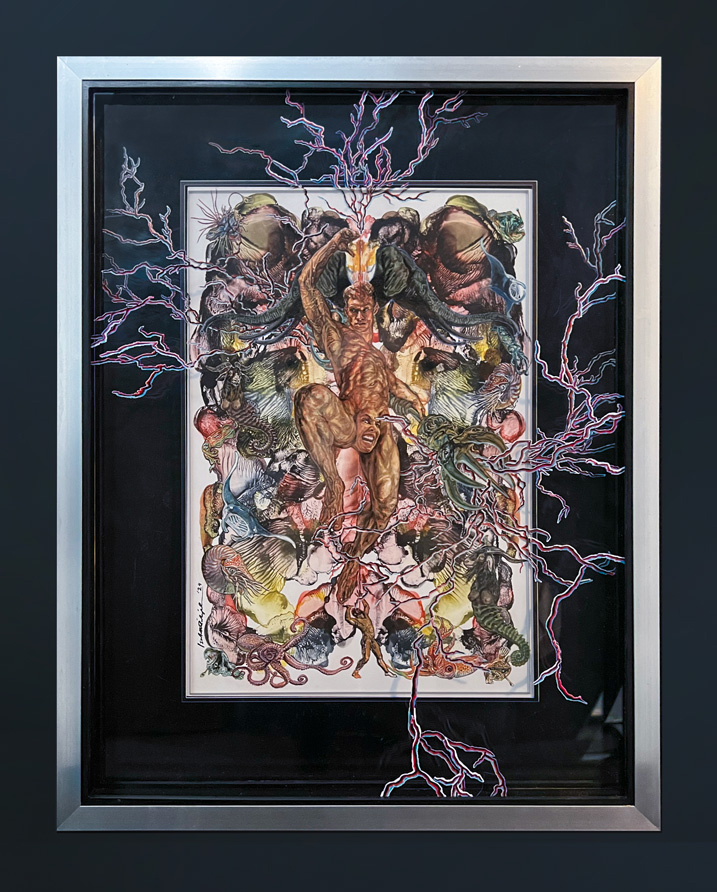
“Lord Phosphor’s Essence” with frame against a black background
One of the unforeseen developments in creating “Lord Phosphor’s Essence” was having to paint all the way to the edges. I literally ran out of paper, which turned into a technical issue because paintings usually have a small margin for the matting of the frame. Sometimes you simply have to fight fire with fire, and if matting was the problem, then it was also the solution.
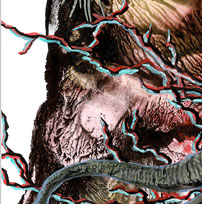
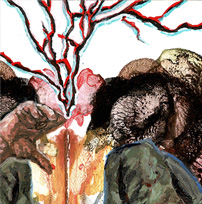
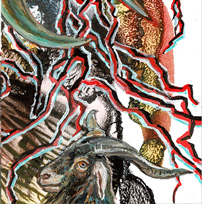
Areas of the painting that reached the edges of the paper
As a result, Lord Phosphor’s frame turned into a work of art itself. Comprising four layers of front and back-etched and painted plexiglass everything was meticulously prototyped and custom made. The metal frame also has a hinge so that people can appreciate the painting with less layers of the “Blightning” or black lightning extending over of it.
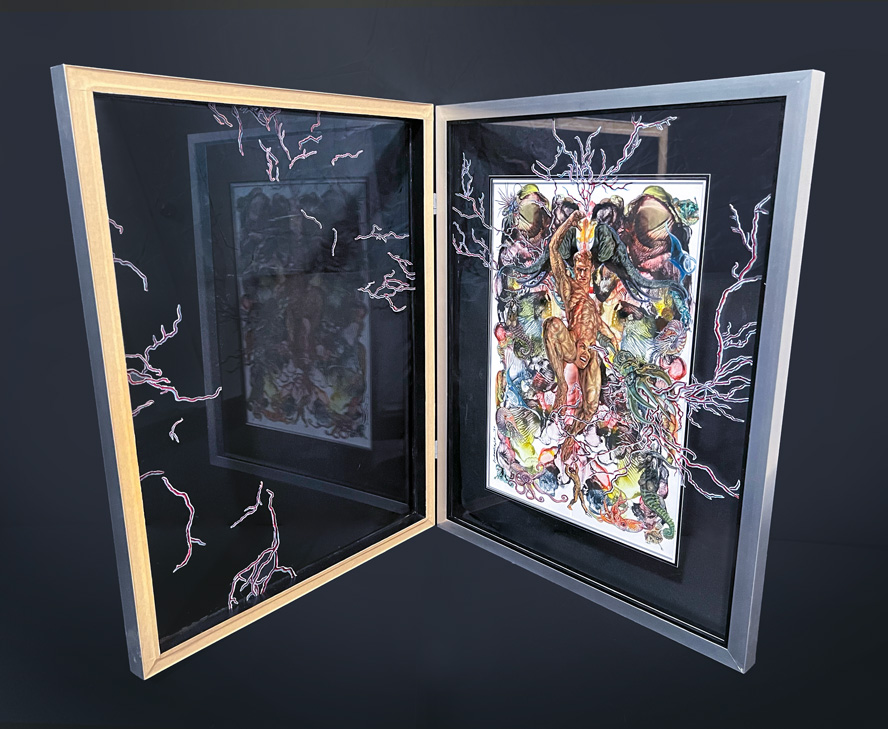
With the frame open
In the original post, I touched briefly upon the Vajra or Dorje –The trident like club that the main character of the painting is holding. The word Vajra in Sanskrit is associated with the word “diamond” and literally means “hard” or “mighty one”. The Tibetan counterpart for the word “Dorje” means “lord of stones”. All in all, both meanings pertain to the indestructibility of an enlightened state of mind. When wielded, the Vajra is also an indestructible weapon of war, which is why the Buddha had to close its prongs to create an era of peace.
According to the Vedas, or oldest texts of Hinduism, the original wielder of the Vajra was the god Indra. Indra was the king of the Devas or heavenly beings of Indian mythology. Naturally, by being a weapon of cosmic proportions, each part of the Vajra correspondingly symbolized components of reality. E.g. the central sphere represents “Dharmata”, the intrinsic nature of everything. There are also four “Makara” (crocodile) heads where the prongs emanate from. Each head represents the “four boundless states”: compassion, love, sympathetic joy, and equanimity. You can Google the rest from here.
Quite contrarily, I believe that the enlightened state of mind IS the source of destruction. Contentment or the end of desire is when one’s creative momentum ceases. Stagnation begins in a state of perpetual comfort that stifles out the inner fire. Therefore, we need to stand at the threshold between good and bad to remain creative, innovative, passionate, and have a sense of meaning.
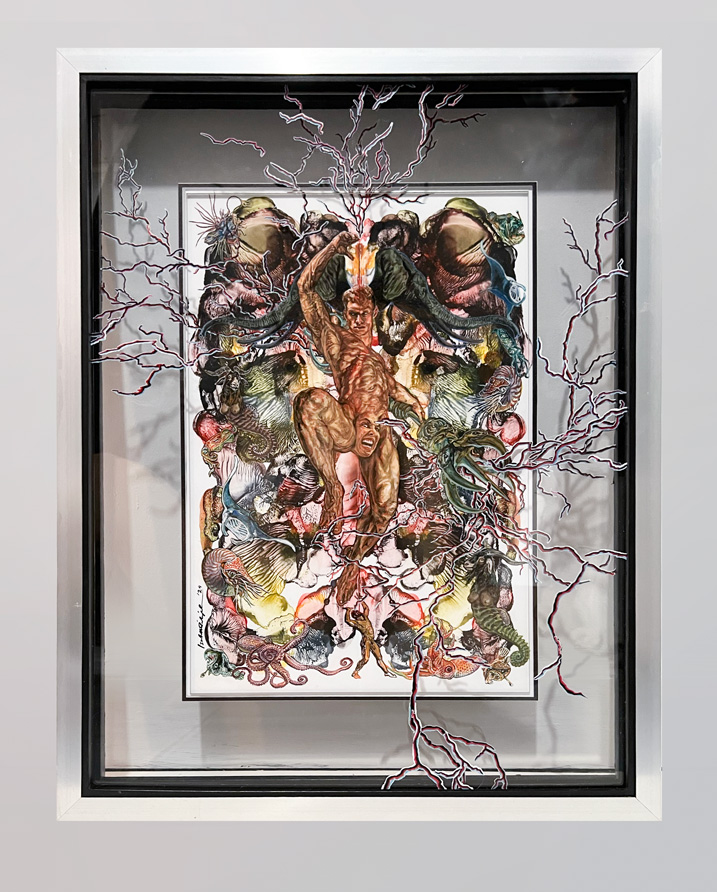
Against a white background
People nowadays are lulled into submission by the constant stream of economical satisfaction. Let’s call it “digital entertainment”. Why strive for more when you can be perpetually distracted for less? It’s no mystery why there is such intellectual decline when low-cost “inner peace” replaces the burning desire to create something revolutionary.
Desire with the right amount of ego are forces that allow us to transcend our humanity. All the greatest works of art exist because of these factors. Therefore, it is the ultimate irony that the accepted definition of enlightenment resembles stasis, and is devoid of the forces that can change the Dharmata itself.
It was essential for me to reopen the Vajra not just to redefine enlightenment once and for all, but to transform the Dharmata altogether. Evolving the Makara heads into serpents reminds us that we do have free will after all, and that we should use our egos and our passion to create ideas humanity has yet to conceive, instead of constantly researching and repeating instructions. This is what the greatest artists (the real ones) certainly did. And, by cataclysmically disrupting this vacuous harmony of pseudo-enlightenment that is cheaply simulated by the bombardment of recycled information, re-establishing a new balance will enable us to find people who are truly on fire once more.

“Lord Phosphor’s Essence”
Watercolor + Dr. Ph. Martin’s Bleedproof White . 10.44″ x 15.29″ . 2024
